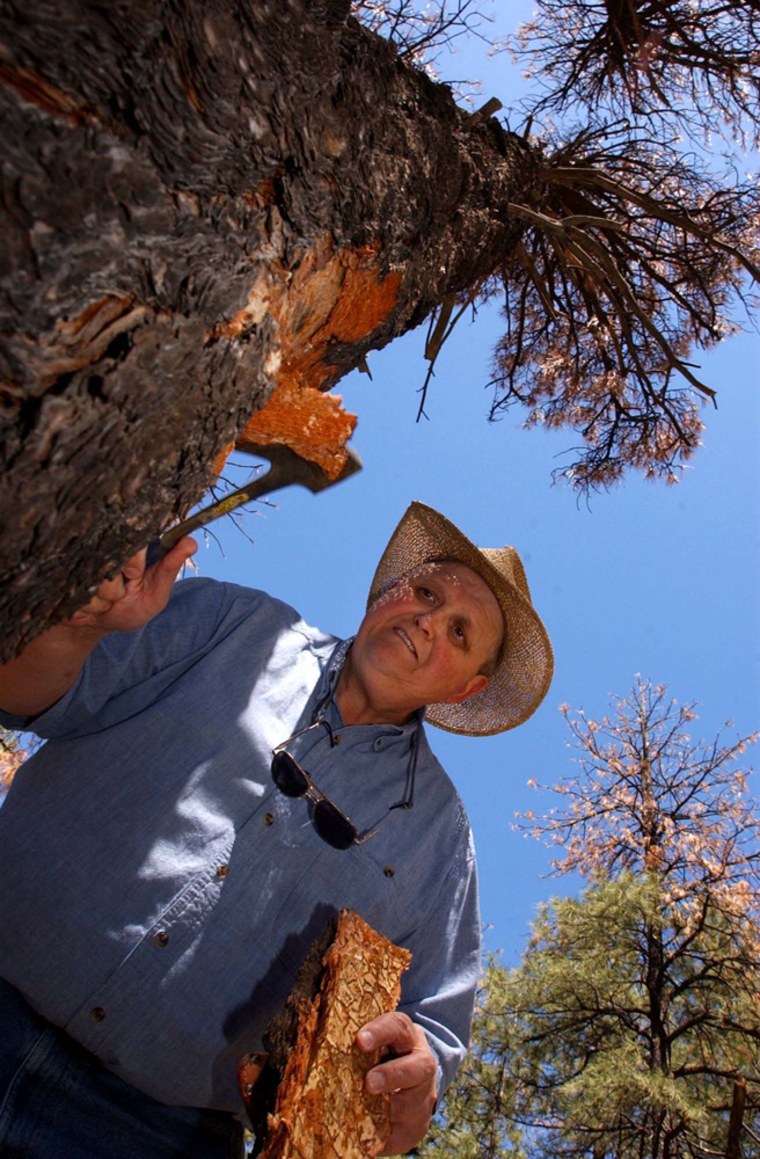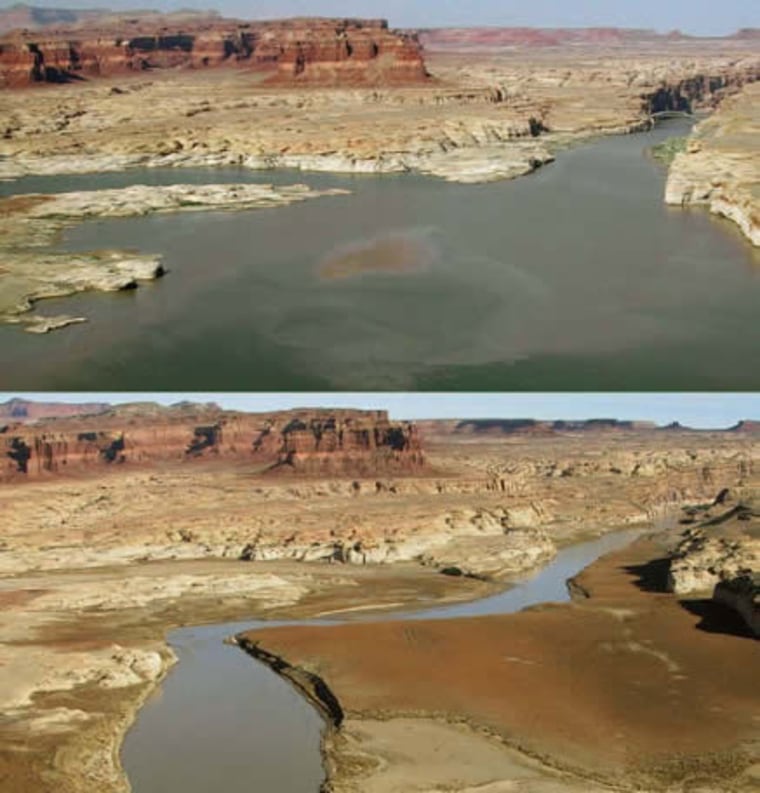The drought gripping the West could be the biggest in 500 years, with effects in the Colorado River basin considerably worse than during the Dust Bowl years, according to scientists at the U.S. Geological Survey.
“That we can now say with confidence,” said Robert Webb, lead author of a background paper released Thursday. “Now I’m completely convinced.”
On Friday, the U.S. Climatic Data Center added its voice, saying that 67 percent of the western United States was in moderate to extreme drought at the end of this spring.
The Colorado River in particular has been in a drought for the entire decade, cutting an important source of water for millions of people across the West, including Southern California.
Environmental groups said the report reinforces the need to figure out a better way to manage the Colorado River before reservoirs run dry.
“The water managers, they just continue to pray for rain,” said Owen Lammers, director of Living Rivers and Colorado Riverkeeper. “They just say, well, we hope that things change and we see rain.”
Water levels compared
The report said the drought has produced the lowest flow in the Colorado River on record, with an adjusted annual average flow of only 5.4 million acre-feet at Lees Ferry, Ariz., during the period 2001-2003. By comparison, during the Dust Bowl years, between 1930 and 1937, the annual flow averaged about 10.2 million acre-feet, the report said.

Scientists use tree-ring reconstructions of Colorado River flows to estimate what conditions were like before record-keeping began in 1895. Using that method, the lowest five-year average of water flow was 8.84 million acre-feet in the years 1590-1594. From 1999 through last year, water flow has been 7.11 million acre-feet.
“These comparisons suggest that the current drought may be comparable to or more severe than the largest-known drought in 500 years,” the report said.
Time to redo water pact?
The report said the river had its highest flow of the 20th century from 1905 to 1922, the years used to estimate how much water Western states would receive under the Colorado River Compact.
The 1922 compact should now be reconsidered because of the uncertain water flow, said Steve Smith, a regional director for the Wilderness Society.
The report did not surprise water managers.

Adan Ortega, spokesman for the Metropolitan Water District of Southern California, said the water district has been increasing water storage, buying water from farmers and investing in alternatives to the Colorado River.
“The big lesson is communities cannot afford to put all their eggs in the proverbial basket. You need ... a diverse portfolio of resources,” Ortega said.
Herb Guenther, director of the Arizona Department of Water Resources, said the agency continues to plan for a lingering drought. “It’s serious, but the sky is not falling. Of course, we wish it would in the form of rain,” he said.
Only half way there?
Droughts seldom persist for longer than a decade, the report noted. But that could mean the current drought is only half over.
“If you’re a betting person, you will bet that we will come out of this drought next year,” Webb said. “It’s a very severe event and these things tend to end fast. There are other indications, though, that suggest that this drought could persist for as long as 30 years.
“We don’t really know.”
The full report is online at water.usgs.gov/pubs/fs/2004/3062/.